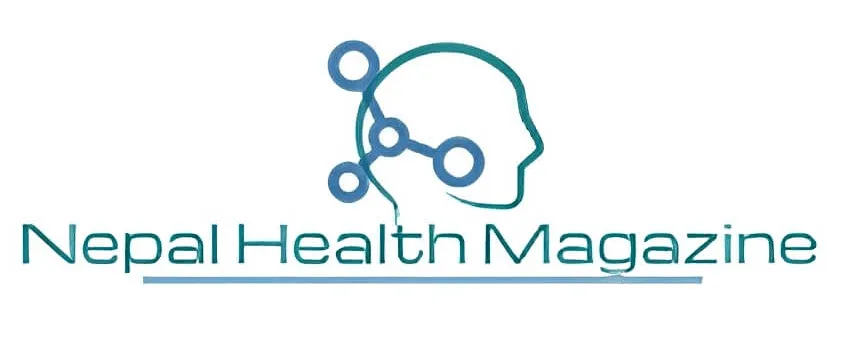Literature Review is the review/discussion of the currently published material on a particular topic. The aim of a literature review is to demonstrate that you have read, and have a good understanding of, the main published work concerning a particular topic or question in your subject area. We must understand that conducting a review of the literature is not something we do once and then consider to be completed. We return to the material we have previously studied, read it again, improve our summaries, and add new articles to our review all the while we are drafting our proposal and coming up with our research topic. Our review of the literature must have a unifying theme that connects to our study topic, methodologies, variables, etc. Literature reviews compile the most pertinent and important works on a subject in order to provide readers with a thorough understanding of what has been written about it and by whom. Let’s first go over the importance of a literature review before we explain how to write one.
It helps to demonstrate a solid understanding of the state of research around your research question
It helps to justify the gap in the research. Research that was done previously million times is of no significance. Therefore, the researcher must be able to identify the clear need for the research.
Literature review plays an important role in the development of the conceptual framework. It helps to identify different variables that can be used in the study and their interrelationship with each other.
It can be also useful in discovering information that can be used in sample size calculations, appropriate methodology, data collection tools, and analytical methods.
Table of Contents
Steps of the literature review
Choosing a review topic
The process of choosing a topic for a literature review is the most challenging. The lack of knowledge in the subject area makes the task more challenging. Firstly, you can skim through books to discover the broad topic in the discipline that interests you. Secondly, read the chapters related to the topics to develop familiarity with the vocabulary (keywords), issues, or controversies in the area. Thirdly, talking to others such as subject experts or reading about it might be useful. This helps to understand how much of the information is available.
The next step after choosing the appropriate topic is to look after the journal articles in the library or electronic databases such as Pub med, Google scholar, and Cochran library. The biggest error newcomers make is choosing an all-inclusive review title, like Diarrhea. Although this approach could be helpful in determining how much material is originally accessible on this subject, it might make the review unfeasible. As a result, it is crucial to narrow down and be as exact as you can with the review topic. You may, for instance, concentrate on a certain section of the subject or the most important features of diarrhea. Is there a particular topic of interest, such as its prevalence or prevention? Identifying what exactly your area of interest is, helps to refine the topic. Reviews that cover too many topics will be either overly lengthy or superficial. As a general guideline, it is preferable to start with a specific issue and, as you go forward, widen the review’s scope as needed. Cutting information effectively is significantly more challenging, especially when time is limited.
Searching and selecting the appropriate article
After having the topic selected, the next step is to identify the relevant literature for your review. Nowadays various electronic databases are used to find out the literature where information can be retrieved easily and quickly. Therefore, the identification of the databases that are relevant to your study is essential. Keywords searches are one of the most useful strategies for searching the relevant literature. However, keywords need to be carefully considered in order to generate the data being sought. For instance, certain American databases such as CINAHL keywords used might differ in spelling and meaning(for example,tumour/tumor, transcultural/multicultural). In order to solve this problem alternative keywords with similar meanings can be considered or wild cards such as an asterisk (*) or question marks(?) can be used. The wild card is an advanced search technique that can be used to maximize our search results in library databases. They are used in search terms to represent one or more other characters. Another strategy is combining the keywords. To help in combining those keywords many databases use commands also known as ‘Boolean operators”. Some of the most common boolean operators and their usage are mentioned below.
AND: Look for articles that include all the identified keywords
OR: Look for articles that include any of the identified keywords
NOT: Exclude articles that contain this specific keyword
Existing literature and meta-analysis can also be an important sources of data. They also contain the bibliographic references of the content that can be assessed. While searching for literature an important question is determining whether the publication to be included in your review is defining the type of the source. There are four main types of sources for review. They are Primary, secondary, Conceptual/ theoretical, or Anecdotal/ opinion. Generally, journals are regarded as having up-to-date information than books as sources of information. This doesn’t mean that books should be excluded as they are also reliable and valid sources of information. In conducting a literature review, it is most important to record the methods and keywords used for the study for developing a search strategy.
Analysing and synthesizing the literature
At this point, we have determined all the relevant articles for our review. There are various strategies that can be useful for the analysis and synthesis of the works of literature. Initially, it is recommended to give a first read of the article to show what they are actually about. By reading the abstract or synopsis that is often provided at the start of an article, we may decide whether the literature is worthy of reading or inclusion. After the initial evaluation is complete, we must go back and do a systematic, more critical review of the article. We can make a summary table generally concerned with the title of the article, the author, the purpose and the method applied in a research study, and findings and outcomes. It is also useful to incorporate comments or key thoughts on your response to the article after it has been reviewed. For the purpose of good record keeping, it is suggested that the source and full reference are also included.
Outlining and writing up
After doing an extensive literature review we might be so overwhelmed to write it up but it is extremely important to develop the outline first. It helps to figure out how we structure our discussions. We might have tons of information to share but if it is not structured properly, it cannot be communicated well to our audience. Therefore, spending some time on how you are going to approach your citation and literature is essential. There are various structural options and they are:
Chronological( in date order): The easiest method is to follow the topic’s development across time, which helps familiarize the audience with the subject (for instance if you are introducing something that is not commonly known in your field). If you decide to use this approach, be sure to avoid just listing and summarizing your sources in chronological order. Try to identify the trends, turning moments, and important discussions that have influenced the field’s course. Give your explanation of how and why specific developments occurred.
Thematic( grouped by theme): You can divide your literature review into subsections that address various aspects of the subject if you have identified certain recurrent primary themes that you will continue to develop throughout your paper.
Methodological: You may compare the findings and conclusions that derive from various techniques if your sources come from several disciplines or fields that employ a range of research methodologies. For instance:
-Qualitative research versus quantitative research
-Theoretical vs empirical research
-Organize the sources used in the study by social, historical, or cultural factors.
Theoretical: The literature review often serves as the theoretical basis in papers. It may be used to talk about different ideas, models, and definitions of important topics. To develop a framework for your study, you might provide an argument for the relevance of a certain theoretical method or mix other theoretical ideas.
Parts of a Literature Review
A literature review is composed of three parts:
Introduction
Keep it brief: most commonly only a paragraph long, but can go up to 1.5 pages.
Introduce the larger subject.
Narrow that larger subject into your manageable topic.
Explain the significance of the topic.
Formulate research question(s).
Explain the scope of your coverage (what criteria were used to include or exclude
studies and why).
Lay out the organization of the review (forecasting statements).
Body
Provide some background information (e.g. definition of concepts, historical perspective(s) on the issue, etc.).
Group the research according to themes, trends, approaches, etc.
Summarize individual items with as much detail as merited (determined by its comparative significance within your overall paper).
Weave citations/descriptions of the literature with your analysis and show the reader how this connects to your overall question(s)
Point out any methodological flaws, gaps in research, or inconsistencies in theory and findings.
Conclusion
Summarize major contributions of significant studies and articles to the body of knowledge under review.
Point out any gaps in the published literature and discuss areas or issues pertinent to future study.
References
The literature review should conclude with a full bibliographical list of all the books, journal articles, reports, and other media, which were referred to in the work.
Regardless of whether the review is part of a course of study or for publication, it is an essential part of the process that all sourced material is acknowledged. This means that every citation in the text must appear in the reference
Finally, whether a method is qualitative or quantitative will frequently determine when and how it is applied. Depending on the goals and objectives of the study as a whole as well as the reasons for doing the review, many types of literature reviews may be employed. Learning how to write a review of the literature is a necessary ability. They can be carried out by researchers or students to contribute to the advancement of knowledge through evidence-based practice.
Authors: Monika Koirala and Anusha Sharma
Public health student

Do you have an article , Want to Publish with us, Send your article at [email protected].
We welcome all the brilliant minds and young writers , dedicated health professionals providing them platform to be heard, and their article be enjoyed all over the world.



